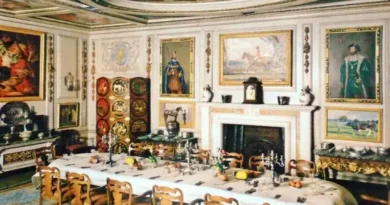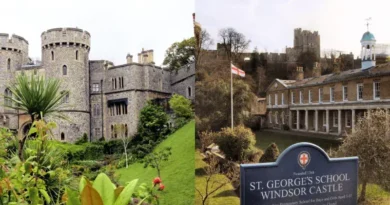Get to Windsor Castle from London Bridge
To travel from London Bridge to Windsor Castle, take the Northern Line from London Bridge Underground Station to Waterloo Station. At Waterloo, board a South Western Railway train heading to Windsor & Eton Riverside Station; these trains run approximately every 30 minutes, and the journey takes under an hour. Upon arrival at Windsor & Eton Riverside, it’s a short five-minute walk to Windsor Castle, though be aware that the route includes a steep hill.
Alternatively, you can take the Jubilee Line from London Bridge to Bond Street, then transfer to the Central Line to reach London Paddington Station. From Paddington, catch a train to Slough, where you’ll need to change to a local Windsor & Eton Central Station service. This route also takes about an hour, with trains departing regularly. Both options provide convenient access to Windsor Castle from London Bridge.
Takeaways
Here’s the information in table format:
| Key Points |
|---|
| The journey from London Bridge to Windsor Castle offers various travel options, including train, bus, and driving, each with unique advantages. |
| The two primary train routes are via Waterloo or Paddington, requiring transfers to National Rail services and culminating in short walks to the castle, with total travel times of 1 to 1.5 hours. |
| Bus travel involves Underground or local bus connections to Victoria Coach Station, followed by the Green Line 702 coach, taking 2 to 2.5 hours but providing a budget-friendly alternative. |
| Driving offers flexibility, covering 25 miles via the M4 and taking about an hour, though parking fees and potential congestion charges must be considered. |
| Accessibility is well-supported at stations like London Bridge, Waterloo, and Paddington, while Windsor & Eton Central offers a flatter walk to the castle; however, visitors should prepare for uneven surfaces and inclines at the historic site. |
Introduction
Windsor Castle, located in the historic town of Windsor, Berkshire, is one of the most iconic royal residences in the United Kingdom. Established in the 11th century by William the Conqueror, it has been continuously inhabited and serves as an official residence of the British monarch. Visiting Windsor Castle offers a unique glimpse into British history, architecture, and the monarchy. For travellers starting from London Bridge, this magnificent landmark has several convenient routes.
Understanding the Route
London Bridge is a major transport hub located on the southern bank of the River Thames in central London. Windsor lies approximately 25 miles (40 kilometres) west of central London. The journey from London Bridge to Windsor Castle can be undertaken via train, with two primary routes available, each involving a combination of Underground and National Rail services.
Train Travel

Train travel is the most efficient and commonly used method to reach Windsor Castle from London Bridge. There are two main train routes to consider, each offering a different experience in terms of travel time, transfers, and arrival stations in Windsor.
Option 1: London Bridge to Windsor & Eton Riverside via Waterloo
Step 1: London Bridge to Waterloo Station
- Route: Begin your journey at London Bridge Underground Station. Board the Jubilee Line (westbound) towards Stanmore and travel to Waterloo Station.
- Frequency: Jubilee Line trains operate frequently, with services every few minutes during peak times.
- Journey Time: The trip from London Bridge to Waterloo typically takes around 4 minutes.
Step 2: Waterloo Station to Windsor & Eton Riverside Station
- Route: At Waterloo Station, transfer to the South Western Railway service heading to Windsor & Eton Riverside.
- Frequency: Trains to Windsor & Eton Riverside depart approximately every 30 minutes.
- Journey Time: The direct journey from Waterloo to Windsor & Eton Riverside takes about 55 minutes.
Arrival at Windsor & Eton Riverside Station
- Proximity to Windsor Castle: Upon arrival, Windsor Castle is a short 5-minute walk from the station. Please note that the route includes a steep hill leading up to the castle entrance.
Option 2: London Bridge to Windsor & Eton Central via Paddington and Slough
Step 1: London Bridge to Paddington Station
- Route: Take the Jubilee Line (westbound) from London Bridge Underground Station to Baker Street Station. At Baker Street, transfer to the Bakerloo Line (northbound) and continue to Paddington Station.
- Frequency: The Jubilee and Bakerloo lines offer frequent services throughout the day.
- Journey Time: The total travel time to Paddington Station is approximately 20 minutes.
Step 2: Paddington Station to Slough Station
- Route: At Paddington, board a Great Western Railway train heading towards Slough.
- Frequency: Trains to Slough depart every 10 to 15 minutes.
- Journey Time: The journey to Slough takes approximately 15 to 20 minutes.
Step 3: Slough Station to Windsor & Eton Central Station
- Route: Upon arrival at Slough, transfer to the Great Western Railway shuttle service to Windsor & Eton Central.
- Frequency: Shuttle trains run every 20 minutes.
- Journey Time: The shuttle ride to Windsor & Eton Central is about 6 minutes.
Arrival at Windsor & Eton Central Station
- Proximity to Windsor Castle: The station is approximately a 10-minute walk to Windsor Castle, with a relatively flat and accessible route.
Additional Considerations
- Tickets and Fares: Ensure you purchase tickets that cover the entire journey, especially when travelling beyond London’s fare zones. Oyster cards and contactless payments are not valid in Windsor, so a paper ticket or an online purchase is necessary.
- Accessibility: Both routes involve station transfers and some walking. If mobility is a concern, the route via Paddington and Slough to Windsor & Eton Central offers a flatter walk to the castle.
- Travel Times: Total journey times for both options are comparable, typically ranging from 1 hour to 1 hour and 20 minutes, depending on transfer times and waiting periods.
By carefully selecting your route and planning, travelling from London Bridge to Windsor Castle can be a straightforward and enjoyable experience, allowing you to explore one of Britain’s most treasured landmarks easily.
Bus Services

Travelling from London Bridge to Windsor Castle by bus is less direct than taking the train but offers an alternative for those who prefer road travel. The journey involves multiple segments, combining local bus or Underground services within London and intercity coach services to Windsor.
Step 1: London Bridge to Victoria Coach Station
- Route: From London Bridge, take the London Underground. Board the Jubilee Line (westbound) towards Green Park Station. At Green Park, transfer to the Victoria Line (southbound) to reach Victoria Station.
- Frequency: Both the Jubilee and Victoria lines operate frequent services, with trains every few minutes during peak hours.
- Journey Time: The total travel time to Victoria Station is approximately 15 minutes.
- Alternative: Alternatively, from London Bridge, you can take Bus Route 344 directly to Victoria Station. Buses run approximately every 10 minutes, and the journey takes about 45 minutes, depending on traffic conditions.
Step 2: Victoria Coach Station to Windsor
- Service: From Victoria Coach Station, the Green Line 702 coach service operates routes to Windsor.
- Frequency: Coaches typically depart every hour, but checking the latest schedules in advance is advisable.
- Journey Time: The coach journey to Windsor takes approximately 1 hour and 30 minutes, subject to traffic conditions.
- Arrival: Coaches arrive near Windsor town centre, within walking distance of Windsor Castle.
Considerations:
- Total Travel Time: Including transfers, the total journey time can range from 2 to 2.5 hours.
- Cost: Bus travel may be more economical than train services, but prices can vary. Check current fares and consider booking tickets in advance for potential savings.
- Comfort: Coaches offer comfortable seating and amenities like Wi-Fi and onboard toilets.
Driving

For those who prefer the flexibility of driving, travelling from London Bridge to Windsor Castle by car is a viable option.
Route Overview:
- Starting Point: Depart from London Bridge.
- Primary Route: Take the A3211 westbound along the River Thames, then merge onto the A4. Join the M4 motorway westbound towards Slough.
- Exit: Leave the M4 at Junction 6, following signs for Windsor/A355.
- Final Approach: Continue on the A332 directly into Windsor town centre.
Distance and Duration:
- Distance: Approximately 25 miles (40 kilometres).
- Journey Time: Typically around 1 hour, depending on traffic conditions.
Parking in Windsor:
- Car Parks: Windsor offers several public car parks within walking distance of the castle, including:
- Windsor & Eton Riverside Station Car Park: Located near the train station.
- King Edward VII Car Park: A multi-storey car park near the town centre.
- River Street Car Park: Offers convenient access to both the town and the castle.
- Parking Fees: Charges apply in most car parks, and rates can vary. It’s advisable to check the latest parking information and consider using cashless payment options where available.
Considerations:
- Traffic: London traffic can be congested, especially during peak hours. Planning your departure to avoid rush hours can result in a smoother journey.
- Congestion Charge: Be aware of London’s Congestion Charge zones. While routes to the M4 may avoid these areas, verifying your planned path is essential to prevent unexpected charges.
- Navigation: A GPS navigation system or a reliable map application can assist in real-time traffic updates and alternative routing if necessary.
Ticketing and Fare Information

Understanding the ticketing options and associated fares is essential for a smooth trip when planning your journey from London Bridge to Windsor Castle.
Train Travel:
- Ticket Types:
- Advance Tickets: These are often more economical and can be purchased beforehand. However, they are valid only for specific trains and times, making them less flexible.
- Off-Peak Tickets: Valid during non-peak hours, these tickets offer flexibility and reduced fares. They are ideal for travellers who can avoid rush hours.
- Anytime Tickets: These allow travel at any time of the day, providing maximum flexibility, but are typically more expensive.
- Purchasing Tickets:
- Online: Tickets can be bought through the official websites of train operators or third-party vendors. Booking online often provides access to the best available fares and allows for seat reservations where applicable.
- At Stations: Ticket machines and staffed counters are available at major stations like London Bridge, Waterloo, and Paddington. It’s advisable to arrive a bit earlier if purchasing tickets on the day to account for potential queues.
- Fares:
- London Bridge to Windsor & Eton Riverside: Fares vary based on ticket type and travel time. As a general guide, off-peak return tickets may cost around £20-£30. Prices can fluctuate, so checking the latest fares before your journey is recommended.
- London Bridge to Windsor & Eton Central: Similar fare structures apply, with prices depending on the chosen route and ticket type.
Bus Services:
- Tickets:
- Local Transport: Oyster cards or contactless payments are accepted on buses and the Underground within London. This offers a convenient and cost-effective way to travel without needing paper tickets.
- Green Line 702: Tickets for this service can be purchased online in advance or directly from the driver, subject to availability. Booking ahead is advisable, especially during peak tourist seasons.
- Fares:
- Local Buses and Underground: Fares are generally lower than train services. An Oyster card or contactless payment ensures the best rates and daily fare capping.
- Green Line 702: The fare for a single journey from London to Windsor is approximately £10-£15, but prices can vary. Checking the latest fares and schedules before planning your trip is best.
Driving:
- Costs:
- Fuel: The fuel cost for the journey from London Bridge to Windsor is relatively modest, given the short distance of about 25 miles (40 kilometres).
- Parking: Parking fees in Windsor vary depending on the car park and duration of stay. For instance, the River Street Car Park offers convenient access to both the town and the castle, but charges apply. It’s advisable to check the latest parking information and consider using cashless payment options where available.
- Congestion Charge: While routes to the M4 may avoid London’s Congestion Charge zones, verifying your planned path is essential to prevent unexpected charges.
Combined Tickets:
Some train operators offer combined tickets that include both rail travel and entry to Windsor Castle, potentially providing savings. For example, South Western Railway provides packages that combine train tickets with discounted castle admission. It’s worth exploring these options when planning your visit.
Accessibility Considerations
Ensuring accessibility is crucial for a comfortable journey to Windsor Castle. Here’s what you need to know:
Train Stations:
- London Bridge Station: Equipped with lifts, escalators, and step-free access throughout, it is accessible to passengers with mobility impairments. Staff assistance is available upon request.
- Waterloo Station: Offers step-free access, lifts, and accessible toilets. Assistance can be arranged through the station’s help points or by contacting staff.
- Paddington Station: Features step-free routes, accessible toilets, and assistance services. It’s advisable to inform staff ahead of time if assistance is required.
- Windsor & Eton Riverside Station: This station has step-free access, but the route to Windsor Castle involves a steep hill, which may be challenging for some visitors.
- Windsor & Eton Central Station: Offers step-free access, and the walk to the castle is relatively flat, making it a more accessible option for those with mobility concerns.
Windsor Castle:
- Terrain: The castle is situated atop a steep hill, and navigating the grounds involves uphill walks and uneven surfaces. Visitors should be prepared for these conditions.
- Mobility Access: While the castle’s historic nature presents challenges, efforts have been made to accommodate visitors with disabilities. Detailed access information is available through AccessAble’s guide to Windsor Castle.
- Assistance: Wardens are available to assist, and accessible routes are marked throughout the castle. It’s recommended that staff be informed of any specific needs upon arrival.
Tips for a Pleasant Journey
To ensure a smooth and enjoyable trip from London Bridge to Windsor Castle, consider the following recommendations:
- Plan Ahead: Check the latest train and bus schedules before your journey, as services can vary, especially on weekends and public holidays. Booking tickets in advance can also help you secure better fares.
- Travel Light: Navigating stations and the area around Windsor Castle is easier with minimal luggage.
- Dress Comfortably: Wear comfortable clothing and sturdy footwear, as visiting the castle involves walking on uneven surfaces and inclines.
- Stay Informed: Monitor real-time service updates through official transport websites or apps to stay informed about any delays or changes.
- Weather Preparedness: England’s weather can be unpredictable. Carrying a waterproof jacket or umbrella is advisable.
- Accessibility Needs: If you require assistance, contact transport providers and Windsor Castle in advance to make necessary arrangements.
Conclusion
Travelling from London Bridge to Windsor Castle offers several convenient options, including train and bus services. By planning, staying informed, and considering your personal needs, you can ensure a pleasant and memorable visit to this historic royal residence.









